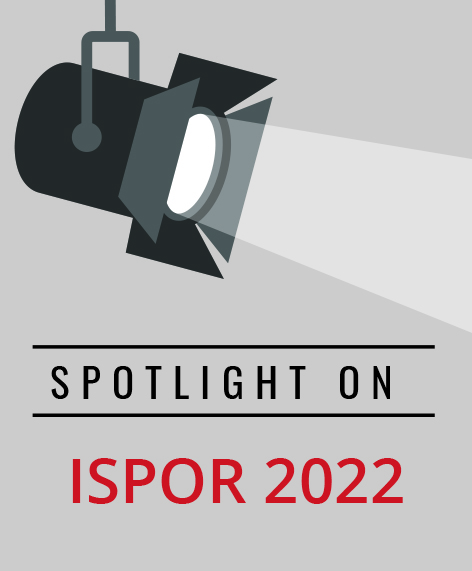Poster Session Recap: Real-World Evidence Studies
Ingrid Cox, MD MSc, Menzies Institute for Medical Research, University of Tasmania, Hobart, Tasmania, Australia
This session highlighted top abstracts on real-world data and featured 6 studies from the United States.
2015 American Thyroid Association Guidelines and Outcomes for Patients With Thyroid Cancer
Presenter: Qiang (Neal) Hao, The Pennsylvania State University, University Park, Pennsylvania, USA
Summary: This study examines the association between the new guidelines for smaller (1-4 cm) primary thyroid carcinomas, particularly for papillary and follicular thyroid cancer which recommends hemithyroidectomy as initial treatment and surgical procedures after release of the guidelines between 2016-2018. Patients were identified from the National Cancer Database and to avoid the bias from the evidence regarding hemithyroidectomy benefits before the guideline release. The authors used 2009-2011 as baseline and estimated hemithyroidectomy utilization in the following years; 2016-2018 were considered as post-guideline. The study concluded that hemithyroidectomy utilization among patients increased following the 2015 guideline release, but the guideline does not appear to be the catalyst for all hospitals as research focused cancer centers began increasing hemithyroidectomy 2 years before the guidelines were released. The increase post-guideline was mainly attributable to community cancer programs.
Adverse Outcomes Associated With Concurrent Gabapentin, Opioid, and Benzodiazepine Utilization: A Nested Case-Control Study
Presenter: Abisola Olopoenia, University of Maryland, Baltimore, Maryland, USA
Summary: In this study, the authors examined the association between concurrent utilization of gabapentin (GABA), opioids (OP), and benzodiazepines (BZD) and respiratory depression, opioid, and substance-related overdose. A nested case control methodology was used to assess Medicare Chronic Conditions Data Warehouse between 2013-2016 and adverse consequences associated with concurrent GABA, OP, and BZD utilization in a disabled Medicare population were examined. There were cohort differences in the association between GABA+OP and both respiratory depression and opioid-related overdose, GABA+OP and GABA+BZD use were associated with significantly higher odds of substance-related overdose across all clinical cohorts. Given this, it is imperative that the benefits and risks of co-prescribing these medications be comprehensively examined.
Changes in Demographic and Clinical Characteristics of Patients With Type 2 Diabetes Initiating Subcutaneous Semaglutide
Presenter: Tyler James Dunn, Novo Nordisk Inc, Plainsboro, New Jersey, USA
Summary: The author presented results from a study that described baseline demographic, clinical characteristics, and antidiabetic medication use in patients with type 2 diabetes initiating subcutaneous semaglutide in the United States in a commercially-insured/Medicare Advantage population between February 1, 2017 and March 31, 2020. The most common antidiabetic medications in both groups, prior to subcutaneous semaglutide initiation, were metformin (77.6% at baseline) and sodium-glucose cotransporter-2 (SGLT2) inhibitors (41.3%), with SGLT2 inhibitor rates slowly decreasing. Both groups demonstrated high prescribing rates for antihypertensives and lipid-lowering therapy. The most common comorbidities included hypertension, dyslipidemia, hyperglycemia, obesity, and sleep apnea. Monitoring of these trends ensures prescribing healthcare practitioners have the most up-to-date and relevant information to managing type 2 diabetes.
Choosing Wisely? Use of Intensity-Modulated Radiation Therapy Following Lumpectomy in Early-Stage Breast Cancer: A SEER-Medicare Analysis
Presenter: Ami Vyas, University of Rhode Island College of Pharmacy, Kingston, Rhode Island, USA
Summary: The author discussed the impact of Choosing Wisely (CW) on use of intensity modulated radiation therapy (IMRT) in older patients with breast cancer following breast-conserving surgery and factors that may predict IMRT use. A retrospective observational cohort study using the Surveillance, Epidemiology, End Results database (SEER) using data between 2007-2015. Just over 18% of women received IMRT prior to the launch of CW in September 2013, compared to 11.0% post-CW. During the post-CW timeframe, being Black, residence in South or North Central United States, presence of comorbidities, presenting with left tumor laterality, and the receipt of radiotherapy in the free-standing facility were significant predictors of IMRT use. In conclusion, the study demonstrated that value-based care in patients with breast cancer improved following the Choosing Wisely initiative.
Clinical and Economic Outcomes of Patients With Multiple Rib Fractures Treated Operatively Versus Non–Operatively: A US Hospital Database Analysis
Presenter: Mollie Vanderkarr, DePuy Synthes, Inc, West Chester, Pennsylvania, USA
Summary: This study evaluated characteristics, treatments, and immediate postoperative outcomes in patients with multiple rib fracture (MRF) with and without surgical rib fixation (SRF). Patients with inpatient hospitalization with a diagnosis of MRF in the PREMIER hospital database from October 1, 2015 to September 1, 2020 were evaluated. Patients were matched using direct matching on abbreviated injury scale thorax and thorax injuries, and propensity score matching on other demographic, comorbid, and injury diagnoses. The study concluded that MRF patients who received SRF had a greater home or home health discharge rate, and lower skilled nursing facilities discharge rate, compared to matched MRF patients without SRF.
Patient Demographics, Clinical Characteristics, Treatment Patterns, and Survival Outcomes Associated With First-Line Treated Unresectable Advanced, Metastatic, and Recurrent Esophageal Squamous Cell Carcinoma in the United States
Presenter: Prakash Navaratnam, DataMed Solutions LLC, New York, NY, USA
Summary: The author discussed treatment patterns and survival outcomes among real-world first-line treated unresectable advanced recurrent or metastatic esophageal squamous cell carcinoma (ESCC) patients in the United States. Patients with esophageal cancer between January 1, 2012, and December 31, 2020, were identified in the Flatiron database. The study concluded that the mean overall survival time was 8.5 months, which was more than double that of the untreated best supportive care patients, which was 4.1 months. Deploying more effective first-line treatments may extend survival among treatment-eligible patients.

